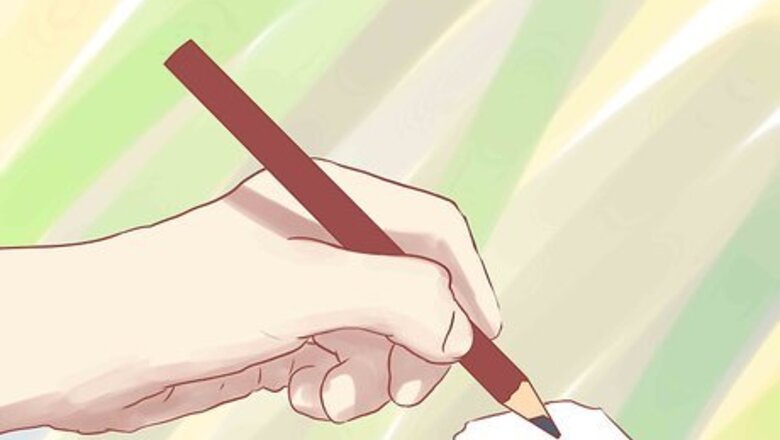
views
Defining Your Idea and Understanding Patents
Understand what a patent is. A patent rewards an inventor with certain exclusive legal rights, for a limited time, in exchange for a full disclosure of the invention, which becomes public information. A patent is represented by a document issued by a federal government upon a proper application, after examination, regarding a qualifying invention. It includes one or more "claims" to a single invention. As a rule, patents are issued only to the "first to file" a disclosure of a patentable invention in a patent application. Also, nobody is allowed to claim an invention they did not invent. The owner of the patent is generally authorized to prevent others from making, using, selling or importing the invention, within the jurisdiction, after the patent is issued and until the patent lapses or expires. Those unlawful acts are known as "patent infringement". Patent claims are also considered to include minor changes that are "equivalent" to any of the patented claims. However, a new means to obtain an equivalent result might still be patentable by you or others. Relatively few patents turn out to be valuable, but yours could certainly be the exception. You must decide whether to pursue the protection of a patent, or perhaps obtain more value if you keep your invention a "trade secret". To enforce your patent you would need to take legal action against an infringer, assuming the infringement occurs in a country where your patent is issued and remains valid and enforceable. In some cases a patent claim can be ruled as "void" because it was issued improperly, making it unenforceable. There are also exceptions for certain limited uses of patented inventions by people who do not own the patent, even without a license from the patent owners.
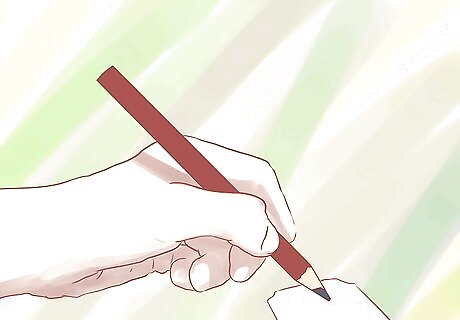
Write down your idea. The act of writing will force you to define your invention, break down the invention into its elements, and think about variations of the invention. Written materials produced as a result will also be helpful for preparing a patent application. Ask yourself these questions: What problem does my invention solve? How does my invention actually work? Who is my target audience? How is my invention different from others like it? Is my invention "new" and "non-obvious" in the current state of the art? How much money will I need to produce my invention? Can I think of potential investors?
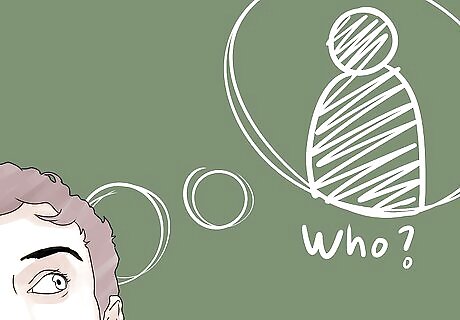
Know who can apply for a patent. Patents can only be applied for in the name of the actual inventor(s). You can apply for a patent individually or as part of a joint research group. In some cases an employer can file an application in the name of former employees who were the inventors.
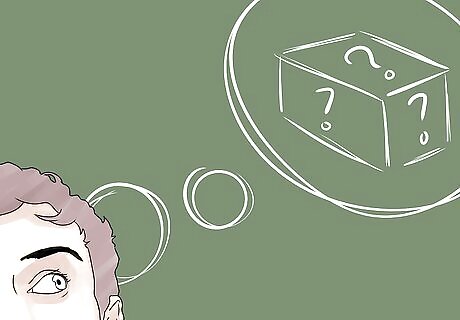
Understand what types of inventions can be patented. There are three main types of patents - utility, design, and plant - that are granted for different types of inventions. You can secure a utility patent for a process, machine, article of manufacture, composition of matter (i.e. a drug), or an improvement upon any of these existing inventions. Though you will apply for a different type of patent, you can also patent an ornamental design of an article of manufacture or an asexually reproduced plant variety. In addition, your invention must provide some utility to society, must not be offensive to public standards of morality, and must be novel, non-obvious, adequately described or enabled, and claimed by the inventor in clear and definite terms. The requirements for "new and non-obvious" are assessed in view of everything ever disclosed in a publication or used in public by anyone (including you), at any time prior to your filing date, not just anything previously patented.
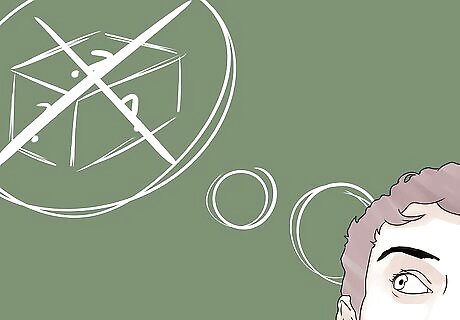
Understand what cannot be patented. There are several ideas or products of human labor that cannot be patented, although many can be protected through other channels such as securing a copyright. You cannot patent: laws of nature, physical phenomena, abstract ideas, literary, dramatic, musical, and artistic works (you need a copyright for these).
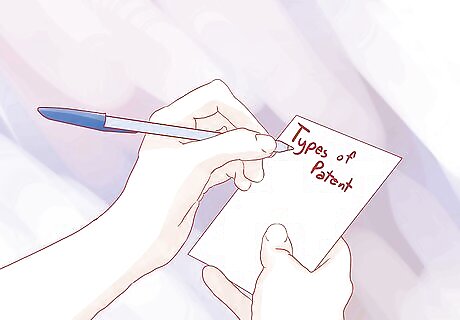
Determine the type of patent you need to protect your invention. Apply for a utility patent for a product that has a specific, clearly-defined benefit to society. Most inventions fall into this category. Patent protection offered by a utility patent lasts for 20 years from the effective filing date of the patent. Apply for a design patent if you have an invention for a new, improved design on an existing product or process that doesn’t affect the function of the original product. A design patent lasts 15 years from the date of the patent issuance, if filed after May 13, 2015, or 14 years if filed before that. A plant patent is applicable if you develop a new asexually-reproductive variety of plant. Protection for a plant patent exists for 20 years from the original patent application filing date.
Conducting a Patent Search
Determine whether your invention is "new" and "non-obvious" by searching the literature in your field as well as patents in the USA and the rest of the world. If your invention has already been disclosed by others, or your invention is an obvious change to or combination of other inventions, it is probably not patentable. It may be possible that your invention is a patentable improvement over all previously known inventions, even if you cannot quickly determine that. If your invention is an "improvement" to an invention currently under protection of patents by others, your patent search may help you understand whether you will need licenses from others before you can start making and selling your own version in their countries.

Contact the nearest Patent and Trademark Depository Library (PTDL) and consult search experts. Patent searching is a difficult process because it requires that you perform several keyword searches and databases house all patents dating back to 1790. If you are in the Washington, D.C. area, you can visit the USPTO Search Facilities located in Alexandria, VA.
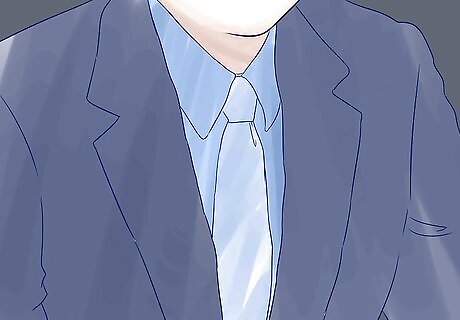
Enlist the help of a registered patent attorney or agent to help you conduct your search. There are experts who know how to operate the patent system and efficiently find out whether or not your product is already patented.

Alternately, conduct a patent search online. It will take you between 25 and 30 hours to complete a patent search in most cases.

Think of all possible ways of describing your invention. Write a list of all the words you can possibly think of to adequately explain what your product does, who it affects, what problem(s) it solves, etc. Having this list pre-written will help you decide what terms to search for in the online database. Don't be afraid to be too broad in your terms.
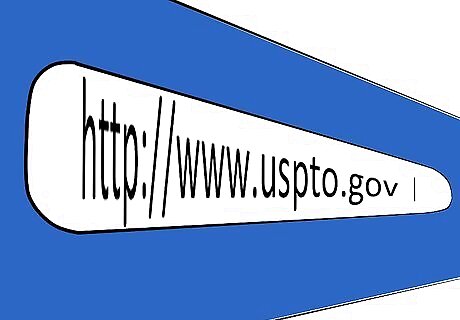
Look up the terms in the USPTO online database. Visit http://www.uspto.gov and select "Patent Classification" from the drop-down "Patents" tab on the left-hand side of the page. Look under "Patent Classification Resources," and click on the link that says "Classification Index, Patents." You are now in the USPTO index. Select the category that most closely describes the broad classification that your invention falls under. There will be subcategories under the broader category which you will need to make a second selection from. Choose the category that most narrowly describes your invention. You may have to conduct several searches using different keywords that you brainstormed.
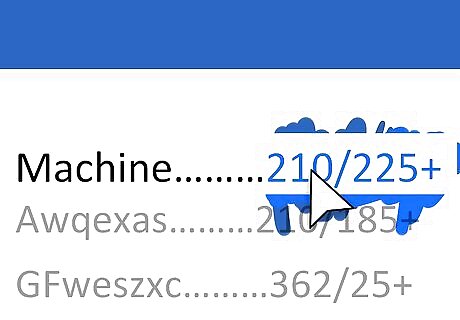
Find your classification codes. Once you choose a subcategory, there will be two numbers located to the right of the subcategory name separated by a forward slash. The first number is the class, and the second is the subclass. Take note of both of these numbers.
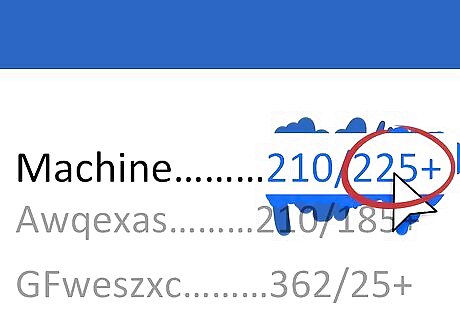
Click on the subclass number. This will take you to the specific subclass number page of the Manual of Classification.
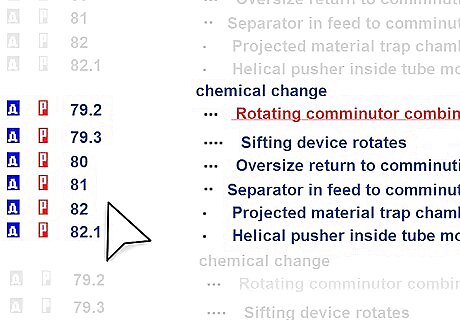
Look at the subclasses around the subclass you selected for similar categories. To make sure that your browser is displaying all relevant subclasses, choose "Expand All Indent Levels" from the drop-down menu at the top of the page. Click on "Submit" and scroll back down to your subclass. Note that you are looking for subclasses that are physically displayed close to your chosen subclass, not ones that are close in number to your subclass. Some original subclasses have been divided into smaller subclasses over time and thus have been shifted around and out of order. Understand that the dots to the left of the subclass titles are indicators of specificity. The more dots, the more specific a subclass will be. Dot numbers range from zero to seven.

Click on the most appropriate subclass number. Doing so will take you to "Classification Definitions," where you can view more information about the subclass that you clicked on. Choose "Show Definition View" to view more information about a particular subclass, and choose "Show Schedule View" to see a list of similar subclasses. Revisit the definition of the broad class and make sure it still aligns with the definition of your invention.
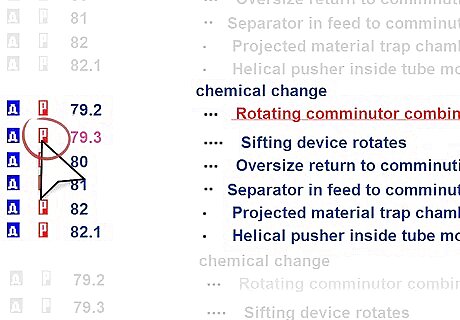
Click on the red P icon to the left of the subclass number. You will be taken to a list of all U.S. Patents in that classification code, which is most likely several thousand patents long. The most recent patents will appear at the top of the page.
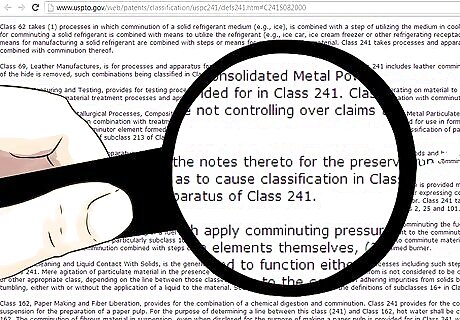
Explore all of the patents to ensure that your invention is not already patented or otherwise disclosed in the references cited in the patents. You can view a patent by clicking on the patent number located to the left of the patent title. If issued after 1976, you can view the full text online. If issued before 1976, you will have to view the patent with a TIFF viewer. Examine the drawings and claims sections of each patent to quickly pick out similarities or differences between your invention and another. Write down the references that other patents cite to direct you to similar patents and related inventions.

Perform a keyword search if you are having difficulty finding an appropriate subclass. Choose "Patent Process" from the drop-down "Patent" menu on the USPTO homepage and click on the link called "Search for Patents." Under "Searching Full Text Patents (Since 1976)", click on "Advanced Search" and type your keywords into the search box. Click on the patent number to view the full text.
Filing a Patent Application
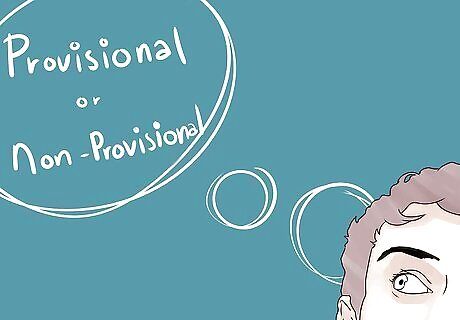
Decide whether you wish to file a provisional or a non-provisional patent application. The provisional application is associated with relatively inexpensive filing fees but serves merely to "hold your place in line" at the patent office for up to one year. If you do not file a non-provisional application within that year, referencing your provisional application, all your rights to your provisional application will be abandoned. Provisional applications do require a cover sheet and a filing fee. After a provisional application is filed, the inventor is allowed up to 12 months to file a non-provisional application that references one or more provisional applications. If the non-provisional application is approved, the invention is entitled to the inventor ship priority of the filing date of the provisional applications that disclose the claimed invention. Provisional applications do not require claims or an oath or declaration. They simply allow the title "patent pending" to be associated with your invention. Provisional applications cannot be filed for design patent applications, however. The value of a provisional application is the ability to extend your ownership of the invention you disclose in the application prior to filing for an actual patent. A complete disclosure is required in your provisional application, if you want to later prove what you knew at the time. Nothing prevents you from filing additional provisional applications during the year, if you discover valuable improvements along the way. You can only claim the "benefit" in a non-provisional for those provisional applications that have not yet expired at the time of filing the non-provisional applications that reference them. You may find informal discussions about getting a "provisional patent", but that is a misnomer. A provisional application for a patent is not examined for patentability and does not become a patent with any enforceable rights. It is a "provisional application", not a "provisional patent".
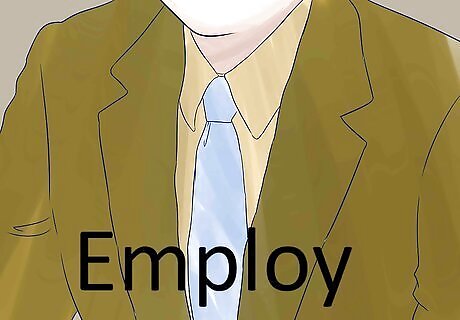
Employ a registered patent attorney or agent. If you choose to hire someone to help prepare your patent application, make sure that s/he is USPTO registered. A registered patent attorney has proven a thorough knowledge of patent law and can ensure that you complete the patent application correctly.
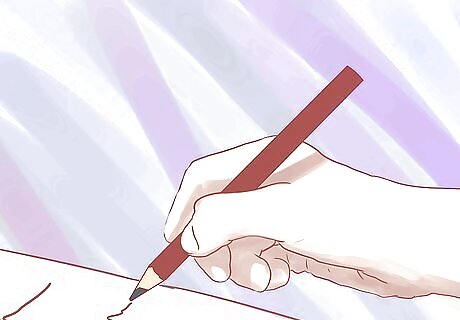
Alternately, prepare your patent application yourself. The patent application process is rather extensive and expensive. You can file your application by mail or online to the Director of the USPTO. As of November 15, 2011, you can save almost $300 by applying online. Applications require six parts: Application transmittal form. Fee transmittal form. Issue and maintenance fees will also be applied if your patent application is approved. Application data sheet. Specification. A written document that outlines the invention description and claims. This document must claim the subject matter which the applicant regards as the invention. You may make several claims in this document as long as they are different from or build upon a previous claim. Include the names of all inventors associated with the specific invention and their addresses and the official name of the invention. The specification should include the following sections in the following order: Title of the invention provided on a cover sheet. List of cross references to related patented inventions (if applicable). Disclosure of federally sponsored research and development (if applicable). Names of other inventors or members of a joint research agreement. Reference to a ”Sequence Listing,” a table, or a computer program listing appendix submitted on an external CD. Background of the invention, including the origin of the idea. Short abstract of the invention. Short description of any drawings or diagrams provided. Detailed description of the invention. One or more claims to the specific invention. Abstract of the disclosure. Sequence listing (if applicable). Drawings, showing the elements of the invention that you are claiming. Executed oath or declaration. This is an oath or declaration that the product was your original invention. An oath must be certified before a notary public or other officer authorized to administer oaths. A statutory "declaration" may be used in lieu of an oath and need not be certified by a third party. It relies upon the fact that making a false declaration would be a felony. Note that, as a rule, the specification and drawings cannot be amended to add new matter during the prosecution of the application. Claims may be amended, but only within the scope of what was disclosed in the original application and any cited provisional applications. It is not unusual for an examiner to request amendment of a title or abstract for clarity.

Make sure your documents are in the specified dimensions and written in English. You can use any standard word processing program such as Microsoft Word, and the documents can be in .doc or PDF form. If you need to scan drawings or diagrams, they must be in PDF form. Make sure your documents contain at least a one-inch left margin and a 3/4-inch right, top, and bottom margin. All documents must be one and a half or double spaced. If you do not include an Information Disclosure Statement (IDS), listing the references you found in your searching, you will need to do that before the statutory deadline (e.g., within 3 months) or additional fees and complications may arise.

Submit the required documents in a single packet at the same time. You will receive an application number and a filing date after you submit your materials. The filing date will be the date that the USPTO receives your application, not necessarily the day that you file the application. An application mailed via USPS Priority Mail® may be given the "filing date' of the date when it was deposited in the mail and an application filed electronically will be given the filing date when it was received electronically. You will be notified of any "missing parts" and given a date by which to submit them. If your application is related to other non-provisional applications you have already filed, whether in the USA or elsewhere, there are highly technical rules of which you need to be aware. They may be found in the Manual of Patent Examining Procedure, or "MPEP", on the USPTO website.
Receiving and Maintaining Your Patent
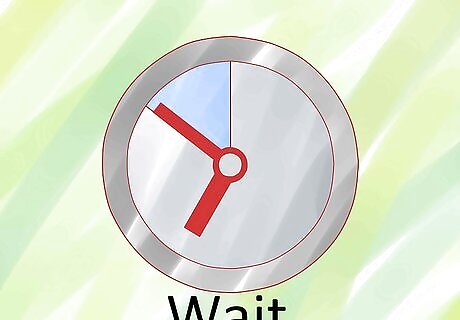
Wait for the USPTO to evaluate your application. After an application is filed, the USPTO will conduct their own search of relevant prior art, including patents and millions of other documents, to check for duplicates and conflicting inventions. Your application will normally be published 18 months after your filing date, making it available for anyone in the world to see. In particular, if your application contains any "trade secrets", they will become public knowledge at that time. During examination, the examiner will typically ask for clarification of your invention or for a narrowing of the scope of protection sought. In addition, there is no guarantee that any application will eventually be granted as a patent. The examination process will vary in duration depending on the nature of your invention and schedule of the patent office. It is unusual for a non-provisional patent application to result in a patent issuance without any interim rebuttal from the USPTO. You should expect it to be rejected, perhaps for numerous reasons, as part of the normal initial process. Do not consider this a setback. You have a limited time in which to reply to each and every basis of objection or rejection, and your application will "go abandoned" if you miss the deadline, including any extensions that you are allowed to purchase. During the "patent pending" phase of your application, you may try to sell or exploit your invention without fear of losing any rights to the invention. If you desire patent protection in other countries, you have a limited time in which to file your patent applications in those countries and still claim invention priority of your US application. Your US "patent pending" does not prevent anyone from making, using, selling or importing your disclosed invention in the USA or any other country. It is merely a warning. You cannot sue for infringement of a patent that is not yet issued.
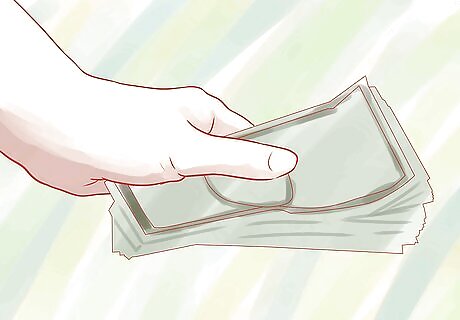
Pay approval fees. If your patent application is approved, you will be sent a Notice of Allowance and Fee(s) Due. Pay the fees within three months from the date on the notice to avoid having your application abandoned.
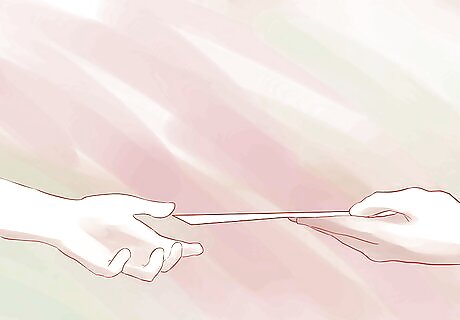
Receive your patent. After the payments are received, you will be issued your patent as soon as possible. Timing will depend on the amount of printing required and the workload of the USPTO.
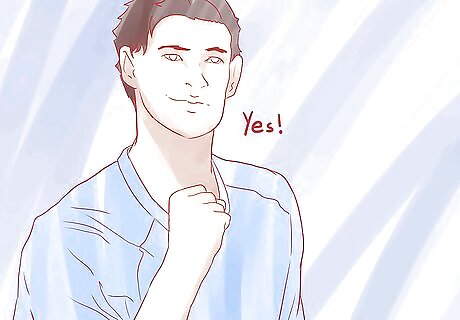
Enjoy the the right to exclude others from "making, using, offering for sale, or selling the invention throughout the United States or importing the invention into the United States", until your patent expires. You may also find it more economical to license others to make or sell your invention for you, rather than starting your own company. However, if you have proven the value of your invention, by making a profit, other investors may be more interested in acquiring your licenses, if not the patent and your entire company with it. Patrol your industry for possible infringements of your patent because only you can decide whether to enforce your patents. Patent litigation can be very expensive. Continue to prosecute your patent applications in other countries, based upon any amendments that were necessary for obtaining your US patent.
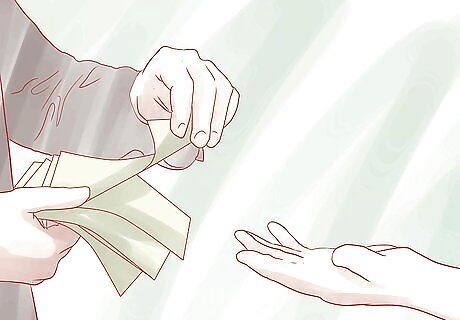
Be sure to pay your maintenance fees. To maintain a US patent in force, you must pay fees due at 3 1/2, 7 1/2, and 11 1/2 years from the date the patent is issued. If you fail to pay these fees, your patent may expire early.
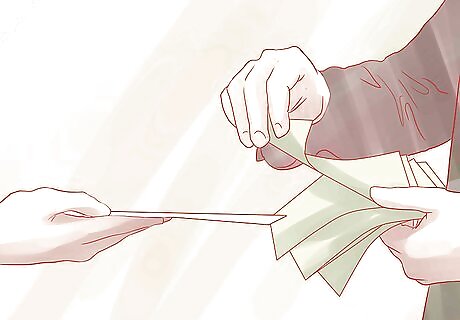
Sell or mortgage your patent. A patent is personal property and may be sold, mortgaged, bequeathed by a will, or passed to future heirs. A written document is required to transfer a patent.



















Comments
0 comment